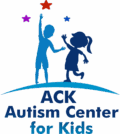When it comes to communication for children on the autism spectrum who are nonverbal, there are various strategies and techniques that can be helpful. Here are a few approaches:
Thank you for reading this post, don't forget to subscribe!Communication for children
- Augmentative and Alternative Communication (AAC): AAC systems can assist nonverbal individuals in expressing their thoughts, needs, and desires. These systems include tools like picture cards, communication boards, sign language, speech-generating devices, or tablet applications specifically designed for AAC. Working with a speech-language pathologist can help determine the most appropriate AAC system for a child.
- Visual Supports: Visual supports can aid in comprehension and communication. These can include visual schedules, social stories, visual cues, and symbols. Visual supports help children understand and navigate daily routines, express their needs, and comprehend expectations.
- Picture Exchange Communication System (PECS): PECS is a specific form of AAC that uses picture cards to facilitate communication. Children learn to exchange specific pictures to request items, activities, or information. The PECS approach focuses on teaching communication as a functional tool.
- Sensory-Based Communication: Some children on the autism spectrum may respond well to sensory-based communication approaches. This involves using sensory experiences like touch, movement, or visual stimuli to communicate. For example, a child may use hand gestures, physical prompts, or eye contact to convey their needs or preferences.
- Social Skills Training: Social skills training programs can help children develop essential social communication skills. These programs focus on teaching appropriate greetings, turn-taking, joint attention, and understanding nonverbal cues. Social skills groups or one-on-one therapy with a trained professional can be beneficial.
- Applied Behavior Analysis (ABA): ABA therapy is often used for children on the autism spectrum and can be effective in developing communication skills. It utilizes behavioral techniques to teach language, communication, and social skills through positive reinforcement and structured learning.
- Collaborate with Professionals: Working closely with a team of professionals, such as speech-language pathologists, occupational therapists, and behavior analysts, can provide a comprehensive approach to communication intervention. They can assess the child’s specific needs and develop tailored strategies to support their communication development.
Remember, each child is unique, and the effectiveness of different strategies may vary. It’s important to consider the individual strengths, preferences, and needs of the child and adapt the communication approaches accordingly.
The Miller Method, or the Miller Method of Developmental Psychotherapy, is not specifically associated with autism. It is a therapeutic approach developed by Dr. Arnold Miller for children with developmental challenges and learning difficulties. While it may be used with individuals on the autism spectrum, it is not an autism-specific intervention.
The Miller Method focuses on sensory and motor development as the foundation for emotional and cognitive growth. It emphasizes creating a structured and supportive environment that helps children develop their sensory integration skills, social engagement, and emotional regulation.
The therapy involves specific techniques, such as “circles of communication” to encourage joint attention and shared experiences, and “I CAN” programs that help children improve their motor planning and sequencing abilities. The Miller Method also emphasizes building relationships and fostering emotional connections between the child and therapist.
It’s important to note that there are various approaches and interventions available for individuals on the autism spectrum, and the effectiveness of each method can vary depending on the individual’s unique needs and characteristics. It’s recommended to consult with a qualified professional, such as a developmental psychologist or therapist, to determine the most appropriate intervention for a specific child with autism.
Discover more from Autism Services and therapy for Kids by counseling
Subscribe to get the latest posts sent to your email.
